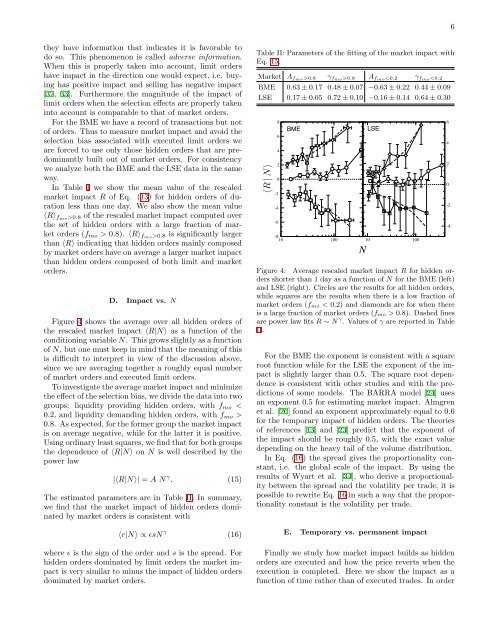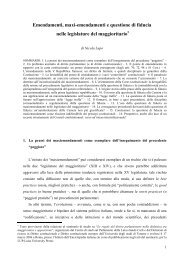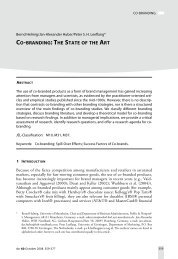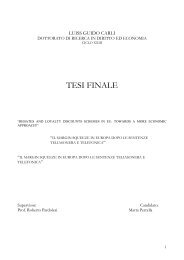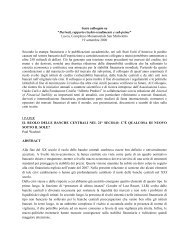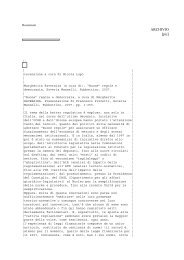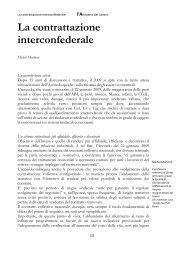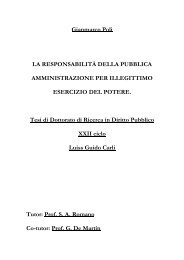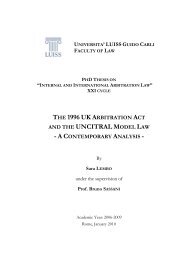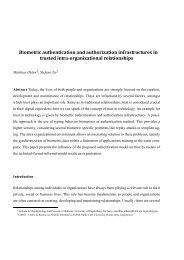Market impact and trading profile of large trading orders in stock ...
Market impact and trading profile of large trading orders in stock ...
Market impact and trading profile of large trading orders in stock ...
You also want an ePaper? Increase the reach of your titles
YUMPU automatically turns print PDFs into web optimized ePapers that Google loves.
6they have <strong>in</strong>formation that <strong>in</strong>dicates it is favorable todo so. This phenomenon is called adverse <strong>in</strong>formation.When this is properly taken <strong>in</strong>to account, limit <strong>orders</strong>have <strong>impact</strong> <strong>in</strong> the direction one would expect, i.e. buy<strong>in</strong>ghas positive <strong>impact</strong> <strong>and</strong> sell<strong>in</strong>g has negative <strong>impact</strong>[32, 33]. Furthermore the magnitude <strong>of</strong> the <strong>impact</strong> <strong>of</strong>limit <strong>orders</strong> when the selection effects are properly taken<strong>in</strong>to account is comparable to that <strong>of</strong> market <strong>orders</strong>.For the BME we have a record <strong>of</strong> transactions but not<strong>of</strong> <strong>orders</strong>. Thus to measure market <strong>impact</strong> <strong>and</strong> avoid theselection bias associated with executed limit <strong>orders</strong> weare forced to use only those hidden <strong>orders</strong> that are predom<strong>in</strong>antlybuilt out <strong>of</strong> market <strong>orders</strong>. For consistencywe analyze both the BME <strong>and</strong> the LSE data <strong>in</strong> the sameway.In Table I we show the mean value <strong>of</strong> the rescaledmarket <strong>impact</strong> R <strong>of</strong> Eq. (13) for hidden <strong>orders</strong> <strong>of</strong> durationless than one day. We also show the mean value〈R〉 fmo>0.8 <strong>of</strong> the rescaled market <strong>impact</strong> computed overthe set <strong>of</strong> hidden <strong>orders</strong> with a <strong>large</strong> fraction <strong>of</strong> market<strong>orders</strong> (f mo > 0.8). 〈R〉 fmo>0.8 is significantly <strong>large</strong>rthan 〈R〉 <strong>in</strong>dicat<strong>in</strong>g that hidden <strong>orders</strong> ma<strong>in</strong>ly composedby market <strong>orders</strong> have on average a <strong>large</strong>r market <strong>impact</strong>than hidden <strong>orders</strong> composed <strong>of</strong> both limit <strong>and</strong> market<strong>orders</strong>.D. Impact vs. NFigure 4 shows the average over all hidden <strong>orders</strong> <strong>of</strong>the rescaled market <strong>impact</strong> 〈R|N〉 as a function <strong>of</strong> thecondition<strong>in</strong>g variable N. This grows slightly as a function<strong>of</strong> N, but one must keep <strong>in</strong> m<strong>in</strong>d that the mean<strong>in</strong>g <strong>of</strong> thisis difficult to <strong>in</strong>terpret <strong>in</strong> view <strong>of</strong> the discussion above,s<strong>in</strong>ce we are averag<strong>in</strong>g together a roughly equal number<strong>of</strong> market <strong>orders</strong> <strong>and</strong> executed limit <strong>orders</strong>.To <strong>in</strong>vestigate the average market <strong>impact</strong> <strong>and</strong> m<strong>in</strong>imizethe effect <strong>of</strong> the selection bias, we divide the data <strong>in</strong>to twogroups: liquidity provid<strong>in</strong>g hidden <strong>orders</strong>, with f mo 0.8. As expected, for the former group the market <strong>impact</strong>is on average negative, while for the latter it is positive.Us<strong>in</strong>g ord<strong>in</strong>ary least squares, we f<strong>in</strong>d that for both groupsthe dependence <strong>of</strong> 〈R|N〉 on N is well described by thepower law|〈R|N〉| = A N γ . (15)The estimated parameters are <strong>in</strong> Table II. In summary,we f<strong>in</strong>d that the market <strong>impact</strong> <strong>of</strong> hidden <strong>orders</strong> dom<strong>in</strong>atedby market <strong>orders</strong> is consistent with〈r|N〉 ∝ ɛsN γ (16)where ɛ is the sign <strong>of</strong> the order <strong>and</strong> s is the spread. Forhidden <strong>orders</strong> dom<strong>in</strong>ated by limit <strong>orders</strong> the market <strong>impact</strong>is very similar to m<strong>in</strong>us the <strong>impact</strong> <strong>of</strong> hidden <strong>orders</strong>dom<strong>in</strong>ated by market <strong>orders</strong>.Table II: Parameters <strong>of</strong> the fitt<strong>in</strong>g <strong>of</strong> the market <strong>impact</strong> withEq. 15.<strong>Market</strong> A fmo>0.8 γ fmo>0.8 A fmo


